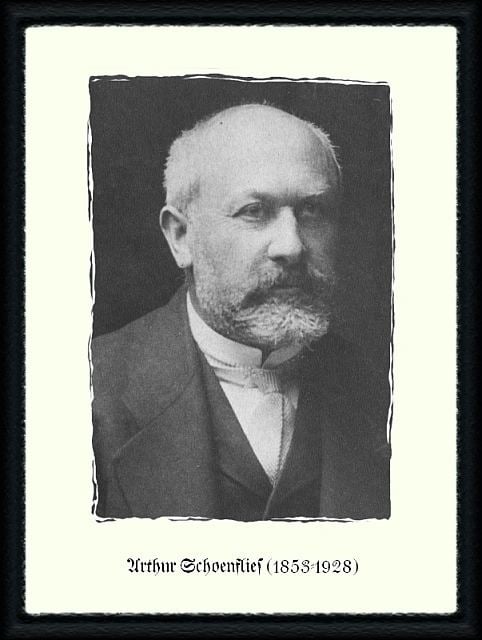Name Arthur Schoenflies Role Mathematician | Influenced by Felix Klein Spouse Emma Levin (1868–1939) | |
 | ||
Known for Schoenflies problemJordan–Schoenflies theoremSchoenflies notationSchoenflies displacement Children Hanna (1897–1985), Albert (1898–1944), Elizabeth (1900–1991), Eva (1901–1944), Lotte (1905–1981) Died May 27, 1928, Frankfurt, Germany Education Humboldt University of Berlin Similar People Karl Weierstrass, Felix Klein, Ernst Kummer, Max Dehn, Julius Plucker | ||
Academic advisors Kummer and Weierstrass | ||
Arthur Moritz Schoenflies
Arthur Moritz Schoenflies ( [ˈʃøːnfliːs]; 17 April 1853 – 27 May 1928), sometimes written as Schönflies, was a German mathematician, known for his contributions to the application of group theory to crystallography, and for work in topology.
Contents
Schoenflies was born in Landsberg an der Warthe (modern Gorzów, Poland). He studied under Kummer and Weierstrass, and was influenced by Felix Klein.
The Schoenflies problem is to prove that an (n − 1)-sphere in Euclidean n-space bounds a topological ball, however embedded. This question is much more subtle than initially appears.
He studied at the University of Berlin from 1870–1875. He obtained a doctorate in 1877, and in 1878 he was a teacher at a school in Berlin. In 1880, he went to Colmar to teach.
Schoenflies was a frequent contributor to Klein's encyclopedia: In 1898 he wrote on set theory, in 1902 on kinematics, and on projective geometry in 1910.
He was a great-uncle of Walter Benjamin.
